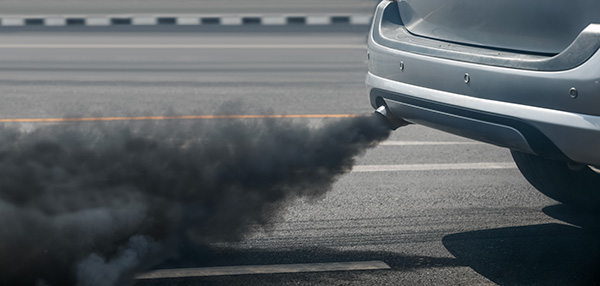
Did you just go in for an emission test for your car, and it didn’t pass? While this situation can be frustrating, it’s important to know that failing an emissions test isn’t the end of the road. In fact, it’s quite common, and there are several ways your car can be fixed to get it back up to code. But what exactly happens after that failed emissions test? How is your vehicle brought back to compliance? Let’s walk through the process and what you can expect.
Why Cars Fail Emissions Tests
The first thing you need to understand is why your car failed the emissions test in the first place. Modern vehicles are built with complex emissions systems designed to minimize harmful pollutants. A problem in any of these systems could lead to a failed test. Common reasons include:
Faulty Oxygen Sensors
These sensors monitor the amount of oxygen in the exhaust and help regulate fuel consumption. If they’re not working correctly, your car might burn too much fuel, increasing emissions.
Catalytic Converter Issues
The catalytic converter helps reduce harmful emissions by converting them into less harmful gasses. When this component fails, your car could release excess pollutants.
Check Engine Light
Many emission tests fail automatically if the check engine light is on, regardless of the severity of the issue causing it.
Old or Worn-Out Parts
Over time, components like spark plugs, air filters, and fuel injectors can degrade, which may lead to higher emissions.
Knowing the cause of failure helps the technician determine what repairs are necessary to pass the next test.
The Diagnostic Process After a Failed Emissions Test
Once your car fails an emissions test, the next step is a thorough diagnostic process to identify the exact problem. This typically involves using a diagnostic tool that reads your car’s onboard computer. The system generates codes that identifies symptoms or indicates that the vehicle is not performing efficiently.
For example, if the oxygen sensor is flagged, the technician knows that part needs attention. Likewise, if the catalytic converter shows signs of failure, further diagnostic will confirm whether it needs replacement. Diagnostics are essential in providing a clear path toward getting your car road-legal again.
The Repair Process
After the diagnostic is completed, the actual repair work can begin. The types of repairs will depend on the issues uncovered during the testing and diagnostics. Some of the most common fixes include:
Replacing Oxygen Sensors
If your oxygen sensor is faulty, it will need to be replaced. Depending on your make and model, this repair could be relatively simple and can significantly improve your vehicle's emissions.
Catalytic Converter Repairs or Replacement
If your catalytic converter is damaged or clogged, it needs replacement. This is a bit more involved, but it’s often the only solution if this part is the cause of your emissions failure.
Repairing the Exhaust System
If there’s a leak or issue with the exhaust system, this could lead to excess emissions. Sealing or replacing parts of the exhaust can solve this problem.
Fixing Fuel System Issues
Problems with the fuel injectors, fuel pump, or fuel pressure regulators can cause your vehicle to run inefficiently, leading to excess emissions. Repairing these components might be necessary to pass the emissions test.
Addressing the Check Engine Light
There are thousands of reasons that the check engine light may trigger and fixing whatever triggered it will usually solve the problem. This could be something as simple as a faulty gas cap or as complex as a malfunctioning engine.
Re-Testing After Repairs
After your car has been repaired, it’s important to bring it back for another emissions test. We will conduct a “pre-test” to make sure the vehicle is likely to pass before performing the official test again. If all goes well and the emissions system is operating within the state’s legal limits, your car will pass, and you'll be on your way with a clean bill of health.
However, if the problem persists or the repair doesn’t fully address the issue, the car could fail again. In that case, the technician will go back to the diagnostics to identify any remaining issues or fine-tune the repairs.
The Cost of Emissions Repairs
The cost of repairs after a failed emissions test varies widely depending on the issue. Replacing an oxygen sensor might be a relatively low-cost fix, while a catalytic converter replacement can be more expensive. The best approach is to get a detailed estimate before proceeding with repairs, so you know what to expect.
It’s also worth noting that some states offer financial assistance or repair vouchers for emissions-related repairs. Be sure to check your state’s regulations to see if you qualify for help.
Why It’s Important to Fix Emissions Issues Right Away
Ignoring a failed emissions test isn’t just bad for the environment—it can also lead to legal and financial consequences. In many states, you can’t renew your vehicle registration if you haven’t passed the emissions test. That means you won’t be able to drive your car legally on the road.
Beyond the legal ramifications, failing to address emissions issues can result in worse fuel efficiency, higher repair costs, and even damage to other components of your vehicle over time. Fixing the problem as soon as possible ensures that your car runs cleaner, lasts longer, and remains compliant with local laws.
Did your car fail its emissions test? Kamphaus Auto Care is here to help. We specialize in diagnosing and fixing emissions issues quickly and affordably. Contact us today to schedule your repair and get back on the road stress-free!